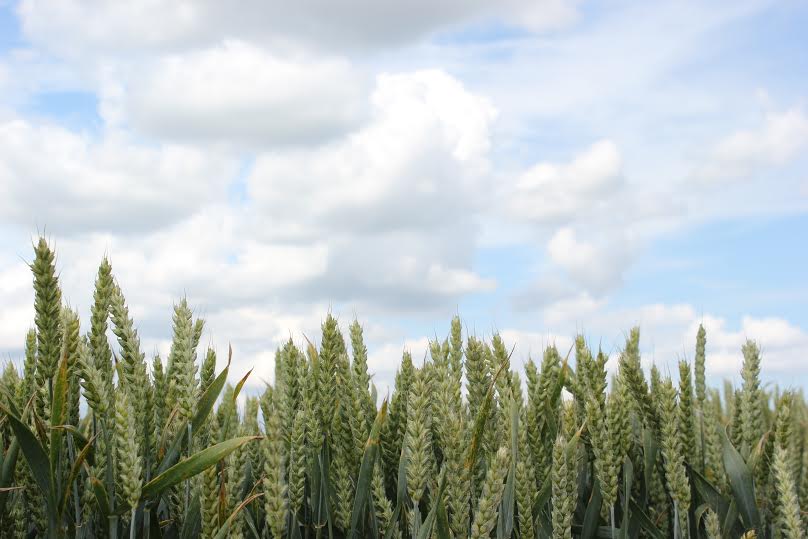
Good second wheat performance could depend on choice of first wheat. Work from breeders Limagrain UK would suggest that first wheat variety choice could have serious implications for the following second wheat crop.
Known varieties that under-perform in the second wheat situation would appear to have a negative effect on the following wheat crop, if grown in the first wheat situation, says Ron Granger, arable technical manager.
"This would suggest that these poor second wheat varieties allow take-all inoculum to build up in the soil, which can lead to devastating yield loss in the second wheat situation, especially if a poor second wheat variety is selected.
"Many wheats marked as ’good’ second wheats on the AHDB Cereals and Oilseeds Recommended List may not actually be the most suitable for this position due to a lack of good phenotypic data, as this second wheat root disease is complex and not straight forward.
"Take-all infection in the field is very sporadic and consistent evaluation of the data is difficult, but never the less, we do have seasons showing high levels of take-all and it is important to acknowledge the diverse differences in varieties."
Mr Granger believes that from a take-all management point of view, first and second wheats need to be considered as pairs.
Trials work carried out by Limagrain in 2008/9, which were both seasons with high take-all incidences, show the performance of a second wheat can differ by as much as 4.2t/ha if the wrong first wheat precedes – a significant impact on farm income!
While some growers may select a variety with high eyespot resistance for a second wheat slot, he wonders if these cultivars would be more useful in the first wheat position.
Interestingly the trials work carried out in 2008/9 suggested that a variety with Pch1 (Rendezvous) eyespot resistance grown in the first wheat situation had lower take-all build up, with the knock on effect of higher yields achieved in the second year for all varieties tested.
However, when choosing a variety for second wheat, take-all isn’t the only pathogen that growers should bear in mind, he continues.
"Eyespot, both sharp and common, and fusarium foot rot all need to be borne in mind."
Mr Granger believes that with new technologies such as the CT scanner technology at the University of Nottingham and the work being done by several of the institutes on take-all, will allow us to get a better handle on this complex disease.
"New and evolving technologies will allow researchers and breeders to analyse a variety’s root mass in a non-destructive manner.
"This means that breeders may be able to select for more robust varieties against take-all, by choosing varieties with greater root-mass development in conjunction with varieties that inhibit lower levels of take-all build up."
A scientific paper based on work at Rothamsted in 2010 confirmed these findings (McMillan, Hammond-Kosack; Gutteridge 2010).
The project produced the first evidence of relatively consistent differences between wheat cultivars in their interactions with the take-all fungus, which could give an indication of those cultivars that could be grown as a first wheat crop, in order to reduce the risk of damaging take-all in a second wheat crop. This phenomenon has been named the take-all inoculum build-up (TAB) trait.
"We still have a lot to learn about the second wheat scenario but slowly and scientifically we are starting to unravel the complexities associated with the take-all disease.
"Hopefully in the future we may be able to achieve yields comparable as a first wheat for the second wheat situation, as this would certainly benefit growers for raising farm incomes across the UK," says Mr Granger.
Panel's verdict
Evolution has performed very well in both the first and second wheat situations in both Limagrain internal and external independent trials, showing that the variety is robust for on farm performance.
"Evolution would appear to be more robust in dealing with take-all as it would appear to perform better in a second wheat slot than a first wheat.
"As a first wheat it yields 104% on the AHDB RL 2016/17, but move it into a second wheat slot and its performance jumps 2%.
Bred by Danish breeder Sejet, the combination of the political climate and tight regulations around crop inputs in Denmark and the tendency for early generation selection of varieties in a second wheat situation would tend to produce wheats with greater root mass to improve nutrient-use efficiency.
Modern technologies will allow scientists to study this claim more closely so we should have more data in the future.
Britannia, also from the Limagrain portfolio is also a variety that performs very well in the second wheat situation, confirmed by both the AHDB RL and independent data sets.
"This may be attributed to its parent Cassius which was also a very good second wheat, with proven performance on farm.
"In an early drilling scenario or if eyespot is a known concern, a variety such as Revelation with very good eyespot resistance based around the Pch 1 Rendezvous resistance should be considered.
"These varieties offer growers very high yield potential for either the hard or soft markets, in either the first or second wheat situation as well as offering a combination of good agronomics and disease resistance, important attributes for ensuring consistency for on-farm performance", he says.
Wet and mild conditions over winter and into the spring would indicate that take-all could be a problem in crops this season, particularly if we see a wet summer.
In similar conditions in 2009, the typical signs of take-all infection which are stunted growth and premature plant senescence were clearly visible, and lead to yield losses of about 2t/ha.
